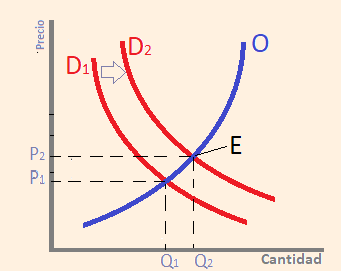
What is microeconomics?
Microeconomics is the branch of economic theory that studies the behavior of economic agents, i.e., investors, firms, consumers and workers.
Microeconomic analysis focuses on the following elements: goods, services, prices, markets and economic agents. Microeconomics studies individual variables, while macroeconomics, which is the other major branch of economics, studies aggregate variables.Some examples of variables studied by microeconomics are:
- With respect to a company: company debt, company expenditure, company profit, etc
- With respect to a consumer: Consumer preferences, Consumer spending, Consumer savings.
- Regarding a worker: Wages.
- Regarding an investor: Risk aversion, Investment amount.
Microeconomics studies, through the supply and demand model, the effect of price changes on supply and demand, as well as the effect of supply and demand movements on prices.
S: Supply
D: Demand
Q: Quantity of product
P: Price
E: Equilibrium Point
In the graph at the top, we can see how an increase in demand will lead to an increase in the quantity produced and in the price. With this, a new equilibrium point is reached, which is the point of intersection of the supply and demand curves. In other words, an increase in demand for a product (shift of the demand curve to the right) leads to an increase in production and an increase in price.